By Marria Qibtia Sikandar Nagra
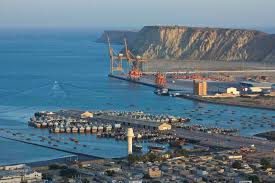 Assuming the contours of exigent pertinence envisioned to accelerate provincial, national as well as regional development, Gwadar is hailed as Pakistan’s next dream juncture. The word Gwadar is a constituent of two Balochi words – “Gwat” meaning wind and “Dar” meaning gateway. This literally translates Gwadar as a “gateway of wind.” This strategic “gateway of wind” situated on the northern coast of the Arabian Sea , opposite the Gulf of Oman is indeed a promising gateway of opportunities and development for Pakistan.
Assuming the contours of exigent pertinence envisioned to accelerate provincial, national as well as regional development, Gwadar is hailed as Pakistan’s next dream juncture. The word Gwadar is a constituent of two Balochi words – “Gwat” meaning wind and “Dar” meaning gateway. This literally translates Gwadar as a “gateway of wind.” This strategic “gateway of wind” situated on the northern coast of the Arabian Sea , opposite the Gulf of Oman is indeed a promising gateway of opportunities and development for Pakistan.
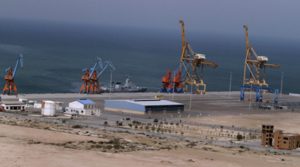 The geopolitical location of Gwadar is exceptionally conducive to the development of the region. The Gwadar sea port is expected to propel an altering balance of power in the Indian ocean by further strengthening ties between Pakistan and China. It can become the central hub of commercial activity and propel the economy of the country. With about 12,637 kilometers of area, the Gwadar port is a gift for regional as well as extra-regional states. It is also believed that Pakistan’s infrastructure will witness a positive surge following the development in Gwadar since it will eliminate the discrepancies between power and electricity supply and demand which currently is a sad cause for power blackouts every now and then.
The geopolitical location of Gwadar is exceptionally conducive to the development of the region. The Gwadar sea port is expected to propel an altering balance of power in the Indian ocean by further strengthening ties between Pakistan and China. It can become the central hub of commercial activity and propel the economy of the country. With about 12,637 kilometers of area, the Gwadar port is a gift for regional as well as extra-regional states. It is also believed that Pakistan’s infrastructure will witness a positive surge following the development in Gwadar since it will eliminate the discrepancies between power and electricity supply and demand which currently is a sad cause for power blackouts every now and then.
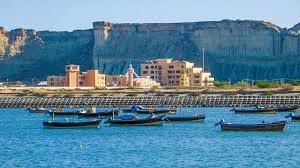 Under the CPEC (China Pakistan Economic Corridor) project, Gwadar is slated to become the economic hub of Pakistan. While Pakistan will be able to materialize its dream for infrastructural security, China on the other hand gets an access to the warm water ports – situated at a distance of about 350 miles from the State of Hormuz, Iran. This forms an essential element of China’s “one belt one road” policy meant to burgeon commercial logistical connections with Europe. It will also consider reducing the time needed to transport Chinese goods and energy to other regions. Currently it is said to take about a period of 45 days for the transportation of goods from China to Middle East and Africa via the State of Malacca. This period will be reduced to about 10 days if they come to be transported through the Gwadar port!
Under the CPEC (China Pakistan Economic Corridor) project, Gwadar is slated to become the economic hub of Pakistan. While Pakistan will be able to materialize its dream for infrastructural security, China on the other hand gets an access to the warm water ports – situated at a distance of about 350 miles from the State of Hormuz, Iran. This forms an essential element of China’s “one belt one road” policy meant to burgeon commercial logistical connections with Europe. It will also consider reducing the time needed to transport Chinese goods and energy to other regions. Currently it is said to take about a period of 45 days for the transportation of goods from China to Middle East and Africa via the State of Malacca. This period will be reduced to about 10 days if they come to be transported through the Gwadar port!
 Similarly, goods that have to be sent to China from elsewhere via the sea, travel more than 10,000 miles to reach the port on China’s eastern seaports. From there onwards they have to travel an additional of 3000 miles overland to reach the Chinese markets. Through the development of Gwadar, this distance reduces magnanimously. Also, since the Gwadar port will be operational throughout the year because if the hot waters here, it serves as an additional benefit catering to both Chinese and Pakistani interests. Moreover, since Gwadar is close to the Iranian border, it will provide trade facilities to Central Asia as well.
Similarly, goods that have to be sent to China from elsewhere via the sea, travel more than 10,000 miles to reach the port on China’s eastern seaports. From there onwards they have to travel an additional of 3000 miles overland to reach the Chinese markets. Through the development of Gwadar, this distance reduces magnanimously. Also, since the Gwadar port will be operational throughout the year because if the hot waters here, it serves as an additional benefit catering to both Chinese and Pakistani interests. Moreover, since Gwadar is close to the Iranian border, it will provide trade facilities to Central Asia as well.
On a social level, Gwadar’s development is meant to generate abundant job opportunities for Baluchistan, thereby reducing its poverty baseline. For a province that has historically been neglected in terms of equitable vocational opportunities for its people, the development of Gwadar is indeed going to usher in new winds for change.
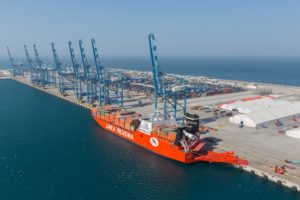 For Pakistan, by transiting it into an economically satiated country, Gwadar’s development will prove to grant Pakistan a viable security leverage that it exigently needs, considering its intermittent standoff with neighboring India. That is primarily the reason why Gwadar’s successful development is an eyesore for Indian vested interests, who have expressed their blatant disapproval of the entire project at numerous occasions. Similarly for China, by catering to its economic goals that pivotally surround its aspirations in emerging as a global power, Gwadar is subject to critique and criticism.
For Pakistan, by transiting it into an economically satiated country, Gwadar’s development will prove to grant Pakistan a viable security leverage that it exigently needs, considering its intermittent standoff with neighboring India. That is primarily the reason why Gwadar’s successful development is an eyesore for Indian vested interests, who have expressed their blatant disapproval of the entire project at numerous occasions. Similarly for China, by catering to its economic goals that pivotally surround its aspirations in emerging as a global power, Gwadar is subject to critique and criticism.
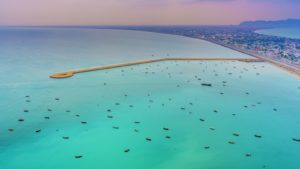 Moreover, the burgeoning of Gwadar means that the master plan evidently takes into account the envisioning and development of wide city with suburban roads, recreational centers, health facilities and a provision of world class education to the local people. By providing a convenient global access to through rail, road, sea as well as air services, Gwadar is the next smart city in the making. Gwadar’s functionality and deliverance will positively give a boost to the industrialization process in the province of Baluchistan. When the Gwadar industrial zone commences its operations, it will qualify Gwadar as a successful industrial and trading zone. The FTZ (Free Trade Zone) as well as the EPZ (Export Processing Zone) will open considerable doors for opportunity for both large-scale as well as small-scale investments, all leading to the development of Gwadar by generating revenue for the local government.
Moreover, the burgeoning of Gwadar means that the master plan evidently takes into account the envisioning and development of wide city with suburban roads, recreational centers, health facilities and a provision of world class education to the local people. By providing a convenient global access to through rail, road, sea as well as air services, Gwadar is the next smart city in the making. Gwadar’s functionality and deliverance will positively give a boost to the industrialization process in the province of Baluchistan. When the Gwadar industrial zone commences its operations, it will qualify Gwadar as a successful industrial and trading zone. The FTZ (Free Trade Zone) as well as the EPZ (Export Processing Zone) will open considerable doors for opportunity for both large-scale as well as small-scale investments, all leading to the development of Gwadar by generating revenue for the local government.
In the light of the above benefits and prospects that Gwadar is expected to provide via its developments, it is imperative to understand the rebuke it occasionally attracts by hostile countries against its development. Serving as a backbone of CPEC, with both Pakistani and Chinese stakes in the forefront, the successful development of Gwadar will usher in new winds of change for the region.









